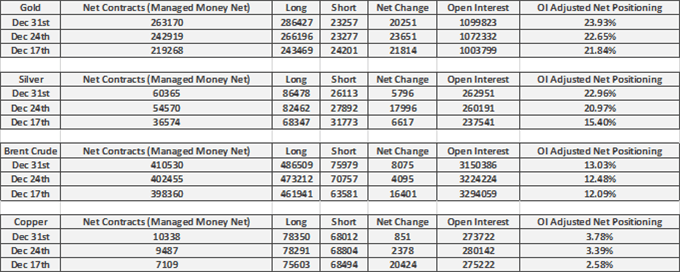Base Metal Tips – Copper Prices: Net longs in the industrial metal grew slightly as funds marginally cut back on their short positions by 1%. However, copper could be starting to top out as investors refrain from taking up fresh longs.
As such, copper prices is likely to take its cue from the risk environment, therefore a pullback in equity markets from its relatively lofty levels is likely to weigh.
Current Positions

Copper ended last year with a bang on rising US-China trade deal hopes, breaking out of the narrow trading range it held since the summer, and has continued its momentum into the opening days of 2020.
The metal, seen by many investors as a proxy for the global economy, hit a seven-month high above $6,100 a tonne in mid-December after reports that the US and China were closing in on a limited trade deal. As the new year begins, it has remained around this level, bolstered by a declaration by US president Donald Trump that a “phase one” deal would be signed on January 15.
“{Copper is} the one metal that could gain the most in the event of a deal,” said Edward Meir, a commodity consultant at ED&F Man Capital Markets.
Analysts say that further demand for copper will come from electric vehicles, which use four times as much of the metal as traditional cars. But they say this will play out over the next few years, leaving the trade war as the most important influence on copper prices in 2020.
Although demand for copper was generally weak last year, a string of supply disruptions helped put a floor under the price. Chile’s state-owned producer Codelco, for example, cut output by about 6.7 per cent over the year.
Another price kicker has come after Dongying Fangyuan, a smelting company that processes 430,000 tonnes of copper a year, or 5 per cent of Chinese refined production, admitted to liquidity problems but denied reports of bankruptcy, after a wave of defaults by companies in Shandong province.

